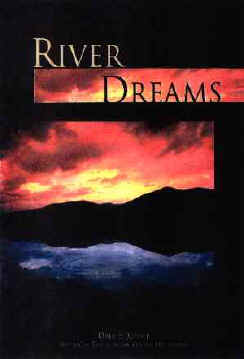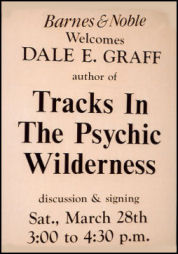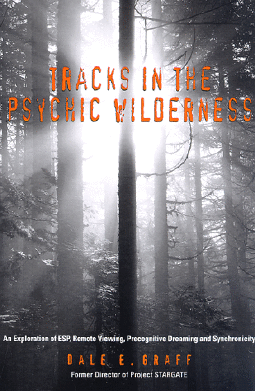|
Dale E. Graff. Element, 224 pages (January 2000) ISBN: 1862047162 SUMMARY RIVER DREAMS expands the theme of psychic exploration introduced by Tracks in the Psychic Wilderness. It has many examples of psi phenomena, or extrasensory perception (ESP) from the author’s personal experiences, from parapsychological research and from operational projects in the government’s STARGATE program. RIVER DREAMS focuses on psi in the dream state, although psi experienced in the conscious state, such as via intuition and remote viewing are central aspects of the various episodes described. Specific incidents are written in a first person style to capture the sense of discovery, and to illustrate the motivation and meaning aspects of the circumstances. This book uses the metaphor of a "river" to emphasize that our subconscious nature is like a relentless far-reaching stream that connects us to others, to our environment, and to the universe. To access the information available from these psychic currents, all we need to do is be open to the possibility of experiencing our psi nature and to find approaches that best match our needs, preferences, and cognitive styles. The examples in this book illustrate a variety of methods for accessing our psi potential in both a conscious mode and via dreams. Specific focus is given to lucid dreams -- dreams when you are aware of experiencing or being in a dream. River Shadows reviews a variety of issues associated with psi phenomena. Confluences examines the root cause of why psi is sometimes disregarded, ridiculed, or even feared by people. Delta Regions considers psi from an explanatory viewpoint and places the phenomena in a perspective that tracks aspects of quantum physics (the hologram, nonlocal effects). This section also considers the potential that psi has for contact with extraterrestrial or multidimensional intelligences. It also includes perspectives on certain experiences, such as UFO sightings and abductions, that draw sensationalistic media attention. An alternative view, based on the author’s lucid dream experiences, is suggested. The last chapter, Reflections, considers the author’s personal and professional psi experiences from a learning and philosophical perspective. We can all uncover our intuitive/psi nature in both conscious and in dream states. However, for most us, the easiest way and most personally meaningful one is to experience psi in the dream state, in the domain of our "theatre of the mind." Appendix A, Journaling Your Future explains how anyone can tap into their psi potential and gain information about approaching future events. These are seen as probabilities dancing on a hidden stream. Some are likely to occur; others are less likely and can even be avoided or changed. The key to becoming a "future see-er" is intention and dedication, along with journal keeping. Appendix B, The Creative Journal:Journaling Toward Goals and Well-Being explains how anyone can improve their physical and psychological condition through dedication and goal setting, and by drawing on the insight available from dreams. Appendix C, Try Your Psi provides the reader with a step-by-step approach for exploring their psi potential while awake and relaxed or via dreams. Specific "targets" are included as psi objectives to help illustrate experimental and practice procedures. RIVER DREAMS presents our psi nature from a natural and practical perspective. It encourages anyone to explore for themselves to discover the reach of their subconscious connections, and to apply this uncovered talent for helping themselves and others navigate along the challenging river called life.
PUBLISHERS WEEKLY February
16, 1998 TRACKS IN THE PSYCHIC WILDERNESS: An Exploration of ESP, Remote
Viewing, Precognitive Dreaming and Synchronicity
Given his scientific and military background, Graff takes a surprisingly personal approach to the topic of psychic experiences. In 1975, Graff was assigned to work with scientists from the Stanford Research Institute on the possible applications of "remote viewing" (the accessing of information without using the physical senses) for the U.S. Air Force. For 20 years, he directed remote viewing experiments in everything from espionage to drug enforcement, under the once-classified project he named Stargate. Skeptical at first, Graff witnessed firsthand and then personally experienced remote viewing with the help of SRI scientists, eventually expanding his research to include intuition, telepathy, "precognitive" dreams and synchronicity ("meaningful coincidences"). Incidents abound: in one chapter, a student in a "Psychic Realm" course Graff taught apparently makes eggs appear in Graff's dream; in another, Graff is seated on a flight next to someone he has been trying to get in touch with for weeks. He focuses throughout on the potential of psi to aid in search-and-rescue missions, police work, and healing; and he concludes with clear, simple steps anyone can take, allegedly, to discover and develop his or her own psychic abilities. Graff is a compelling storyteller and a convincing proponent of the continued expansion of psychic research. Publication date is 1 March 1998.
This page last updated 04 March 2011 |




